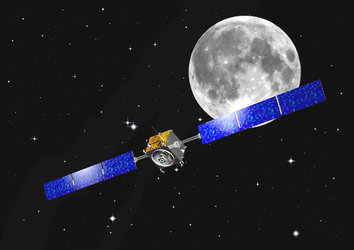ESA and NASA extend ties with major new cross-support agreement
On 21 March ESA and NASA signed an agreement in Washington, DC, extending the two agencies' long-standing cooperation in the areas of satellite tracking, spacecraft navigation and mission operations.
The agencies' new 'Network and Operations Cross-support' agreement covers the ongoing provision to each other of services for missions where no specific Memorandum of Understanding (MOU) is in place, typically due to the short-term nature or limited scope of the support.
This type of support has been provided in the past, but was limited only to the sharing of ground tracking stations and had to be arranged for each mission separately through a Letter of Agreement (LoA), which was a long process.
Agreement covers tracking, navigation and systems sharing
The new agreement was signed in Washington, DC, by William H. Gerstenmaier, NASA Associate Administrator for Space Operations, and Gaele Winters, ESA Director for Operations and Infrastructure.The agreement constitutes a major milestone in the long-standing cooperative relations between ESA and NASA, and covers cross-support in the following areas:
- Bi-directional Telemetry, Tracking and Command (TT&C) services
- Space Navigation, including services such as determining spacecraft trajectories and Very Long Baseline Interferometer (VLBI) services
- Mission Operations and Ground Data Systems services
Enhanced effectiveness, reduced risk for both agencies
In particular, the bi-directional sharing of TT&C services will enhance effectiveness and reduce risk for both agencies.
This interoperability will benefit both by providing immediate back-up in case a mission's prime ground station is not available due, for example, to local weather interference or earthquakes, by ensuring additional station support during critical mission phases such as launch, orbit entry or manoeuvres, and by expanding station resources when ground tracking coverage might otherwise be missed.

Very Long Baseline Interferometry refers to accurately locating spacecraft using highly sophisticated signal processing techniques and is achieved using Delta DOR (Delta Differential One-Way Ranging) technology, used by both NASA and ESA.
Since 2005, ESA has installed Delta DOR receivers at both of the Agency's 35-metre antenna deep-space stations, DS1 in New Norcia, Australia, and DS2 in Cebreros, Spain.
The first application of the new agreement is foreseen during the critical Launch and Early Orbit Phase (LEOP) for NASA's upcoming Dawn and Phoenix missions. ESA will furnish support via the Agency's Perth and Kourou 15-metre antenna stations.
ESA's tracking stations network - ESTRACK - is a worldwide system of ground stations providing links between satellites in orbit and the ESA's European Space Operations Centre (ESOC), in Darmstadt, Germany. The core ESTRACK network comprises 11 terminals sited at eight stations in five countries.
More information
Dr Manfred Warhaut, Head of Mission Operations
ESA/ESOC, Darmstadt
Tel. +49 6151 900
Email: manfred.warhaut @ esa.int
Michael Braukus
NASA Headquarters, Washington, DC
Tel. +1 202 358 1979















 Germany
Germany
 Austria
Austria
 Belgium
Belgium
 Denmark
Denmark
 Spain
Spain
 Estonia
Estonia
 Finland
Finland
 France
France
 Greece
Greece
 Hungary
Hungary
 Ireland
Ireland
 Italy
Italy
 Luxembourg
Luxembourg
 Norway
Norway
 The Netherlands
The Netherlands
 Poland
Poland
 Portugal
Portugal
 Czechia
Czechia
 Romania
Romania
 United Kingdom
United Kingdom
 Slovenia
Slovenia
 Sweden
Sweden
 Switzerland
Switzerland
































